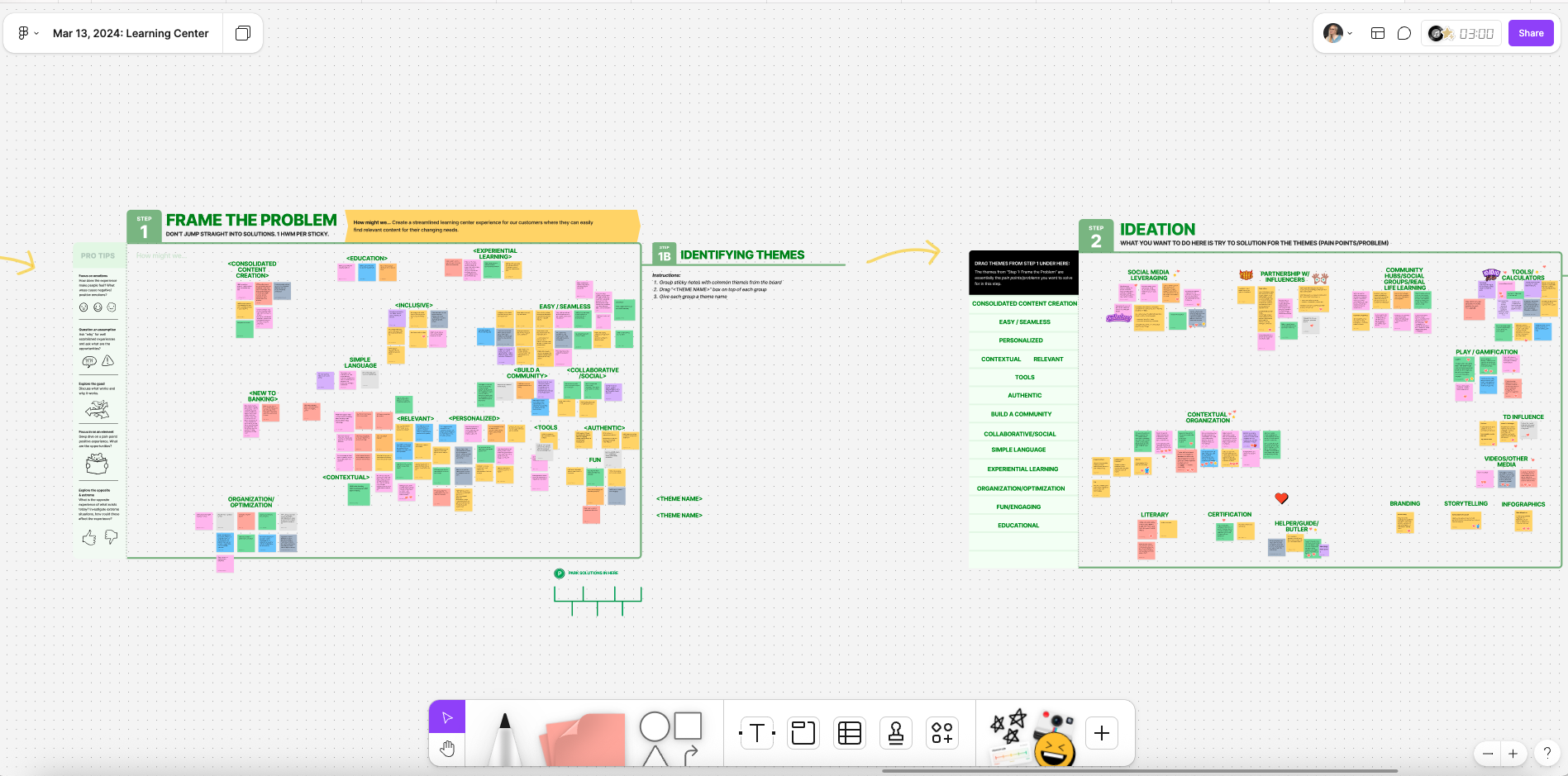Learning Center: MVP1
Unifying Financial Education Through Design Thinking
The challenge
Financial education content was scattered across TD’s digital ecosystem, making it difficult for users to discover and engage with. Six different teams were producing content — some hosted on third-party vendor platforms, others buried deep in the site — with no unified strategy, IA, or user journey. Our goal for MVP1 was to consolidate this content into a centralized, accessible, and SEO-friendly Learning Center.
The Learning Center my team inherited (above) was a bit of a “link farm” with no real content strategy and outdated content
Discovery & Research
We kicked off with a review of existing research gathered from both Canadian and U.S. markets, which highlighted a strong user appetite for trustworthy, accessible financial education directly from their bank. We found that:
Users want bite-sized, digestible content tailored to their life stage.
Content should be contextually surfaced (e.g., mortgage education on a mortgage product page).
Navigation and discoverability were key pain points due to disjointed hosting and
poor IA.
The FigJam board from our Design Thinking kickoff session with various stakeholders and content producers throughout TD Bank
Design Thinking in Action
Before jumping into design, I co-led a series of design thinking workshops with stakeholders across the six content teams. The goal was to:
Align on user needs and business goals
Identify what content should be prioritized for MVP
Define SEO-driven categories based on search behavior and keyword trends
Map a shared vision for how content could scale in future phases (e.g., AI-powered contextual learning)
These workshops were instrumental in getting buy-in and co-creating a foundation for content governance moving forward.
Information Architecture & Content Strategy
With a clear understanding of the content ecosystem, we focused MVP1 on:
Designing a centralized Learning Center hub on td.com
Defining a scalable taxonomy rooted in SEO and user behavior
Mapping content into core life event categories (e.g., Buying a Home, Managing Debt)
Cleaning up outdated or low-performing content and identifying gaps
This phase was deliberately "quick and dirty" — balancing speed with impact to create a foundational experience we could test and iterate on.
Cross-Functional Collaboration
This project required deep coordination between design, content strategy, engineering, SEO, and legal. I worked closely with:
Content creators across 6 teams
SEO partners to validate category structure
Engineers to scope what was feasible for MVP1 vs future phases
Our updated Learning Center on td.com
What’s Next: MVP2 and Beyond
While MVP1 focused on centralization and cleanup, the long-term vision is to contextually embed educational content across product experiences — potentially using AI to dynamically surface relevant learning modules. MVP2 will explore how to weave financial education directly into product detail pages and application flows.
Takeaway
This project showcased the power of collaborative design thinking and ruthless prioritization. By anchoring our decisions in existing user research and uniting siloed teams, we created an MVP that improved discoverability, elevated existing content, and laid the groundwork for smarter, contextual financial learning experiences in the future.




